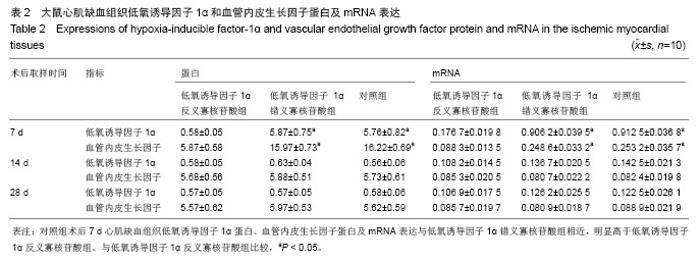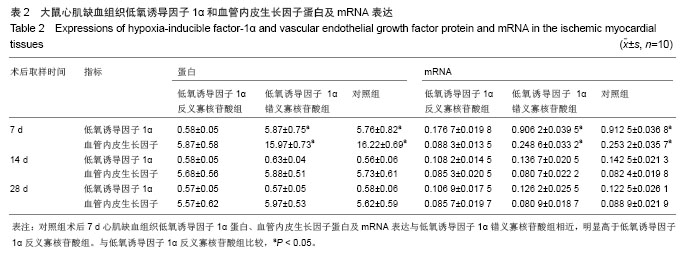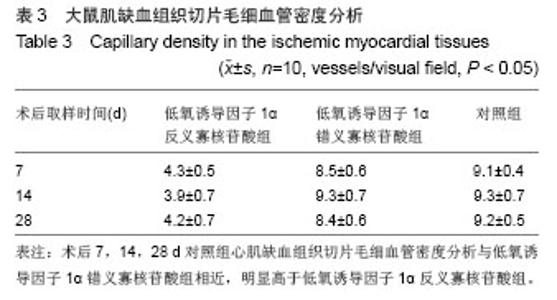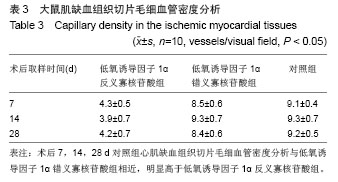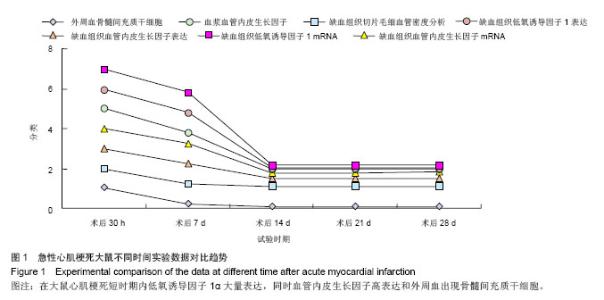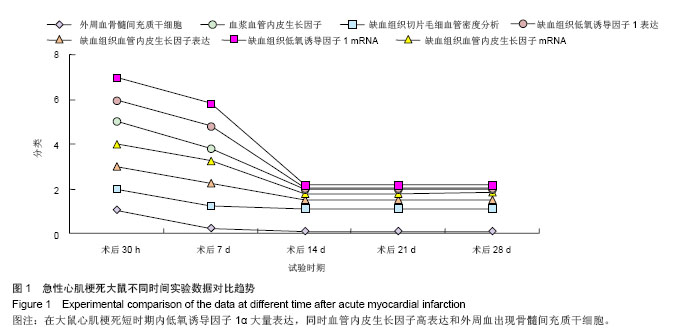| [1]Fukuda K. Development of regenerative cardiomyocyctes from mesen-chymal stem cell for cardiovascular tissue engineering. Artif organs.2001;25(3):187-193.
[2]Shintani S, Murohara T, Ikeda H, et al. Mobilization of endothelial progenitor cells in patients with acute myocardial infarction.Circulation.2001;103:2776-2779.
[3]徐军军,胡刚,邹运动,等.外周血来源间充质干细胞的成骨及成脂诱导分化[J].中国组织工程研究与临床康复,2008,12(16): 3057-3060.
[4]Majmundar AJ, Wong WJ,Simon MC. Hypoxia-inducible factors and the response to hypoxic stress. Mol Cell. 2010;40(2):294-309.
[5]Lemus-Varela ML, Flores-Soto ME, Cervantes-Munguía R, et al. Expression of HIF-1 alpha, VEGF and EPO in peripheral blood from patients with two cardiac abnormalities associated with hypoxia. Clin Biochem.2010;43(3):234-239.
[6]Tekin D, Dursun AD, Xi L. Hypoxia inducible factor 1 (HIF-1) and cardioprotection. Acta Pharmacol Sin. 2010;31(9): 1085-1094.
[7]Camaeliet P, Jain ILK. Aniogenesis in cancer and other diseases. Nature. 2000;407:249-257.
[8]Lu J, Zhang K, Chen S, et al. Grape seed extract inhibits VEGF expression via reducing HIF-1alpha protein expression. Carcinogenesis.2009;30(4):636-644.
[9]姚佳红,赵红卫,刘朝奇.VEGF及其受体研究新进展[J].现代医药卫生,2003,19(8):973-974.
[10]Kinnaird T,Stabile E,Burnett MS, et al. Marrow- derived stromal cellsexp ress genes encoding a broad spectrum of arteriogenic cytokines and promote in vitro and in vivo arteriogenesis through paractine mechanisms.Circ Res. 2004; 94:678-685.
[11]Armiñán A, Gandía C, García-Verdugo JM,et al. Mesenchymal stem cells provide better results than hematopoietic precursors for the treatment of myocardial infarction. Jam Coll Cardial.2010;55(20):2244 -2253.
[12]Li Q, Turdi S, Thomas DP, et al. Intra-myocardial delivery of mesenchymal stem cells ameliorates left ventricular and cardiomyocyte contractile dysfunction following myocardial infarction.Toxicol Lett.2010;195(23):119-126.
[13]Losordo DW, Dimmeler S. Therapeutic angiogenesis and vasculo- genesis for ischemic disease. Circulation.2004;109: 2692-2697.
[14]McCarty RC,Xian CJ, Gronthos S, et al. Application of autologous bone marrow derived mesenchymal stem cells to an ovine model of growth plate cartilage injury. Open Orthop J.2010;4:204-210.
[15]Dai W, Hale SL, Martin BJ, et al. Allogeneic mesenchymal stem cell transplantation in postinfarcted rat myocardium: short-and long-term effects. Circulation.2005;112(2):214- 223.
[16]Vater C, Kasten P,Stiehler M. Culture media for the differentiation of mesenchymal stromal cells. Acta Biomater. 2011;7(2):463-477.
[17]Zhou Y, Wang S, Yu Z, et al. Direct injection of autologous mesenchymal stromal cells improves myocardial function. Biochem Biophys Res Commun. 2009;390(3):902-907.
[18]Zheng B,Chen H,Zhu C. Effects of combined mesenchymal stem cells and home exogenase-1 therapy on cardiac performance. Eur J Cardiothorac Surg.2008;34(4):850-856.
[19]Brusnahan SK, McGuire TR, Jackson JD, et al. Human blood and marrow side population stem cell and Stro-1 positive bone marrow stromal cell numbers decline with age, with an increase in quality of surviving stem cells: correlation with cytokines. Mech Ageing Dev.2010;131(11-12):718-722.
[20]Orlic D, Stura J,Chimenti S,et al.Mobilized bone marrow cells repair the infarcted heart,improving function and surviva1. Proc Natl Acad Sci USA.2001;98:10344-10349.
[21]Orlie D, Kajstura J, Chimenti S, et al. Bone InalTow cells regenerte infracted myocardium. Nature.2001;410:701-705.
[22]Orlic D, Kajsmra J, Chimenti S, et al.Bone mallow stem cells regenerate infarcted myocardium. PediatrTransplant.2003; 7(Suppl 3):86-88. |


